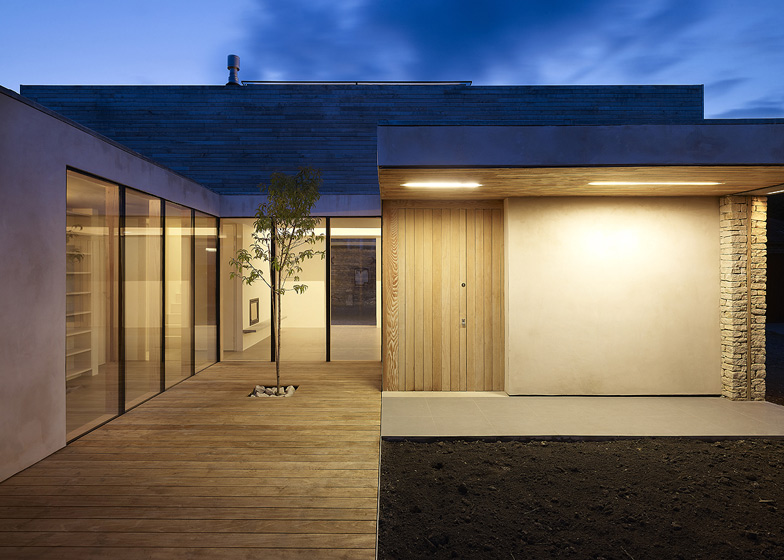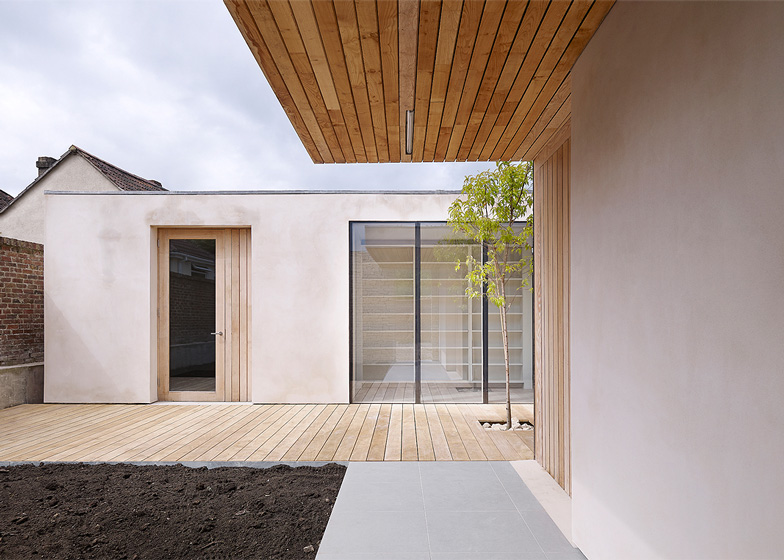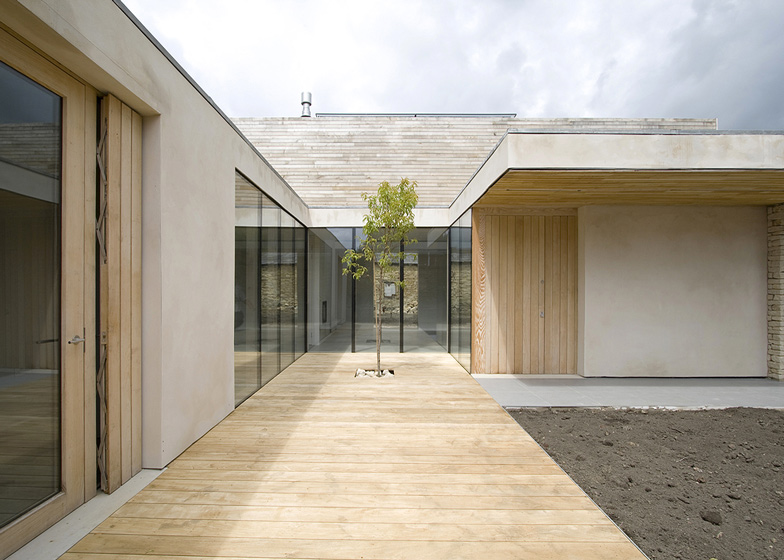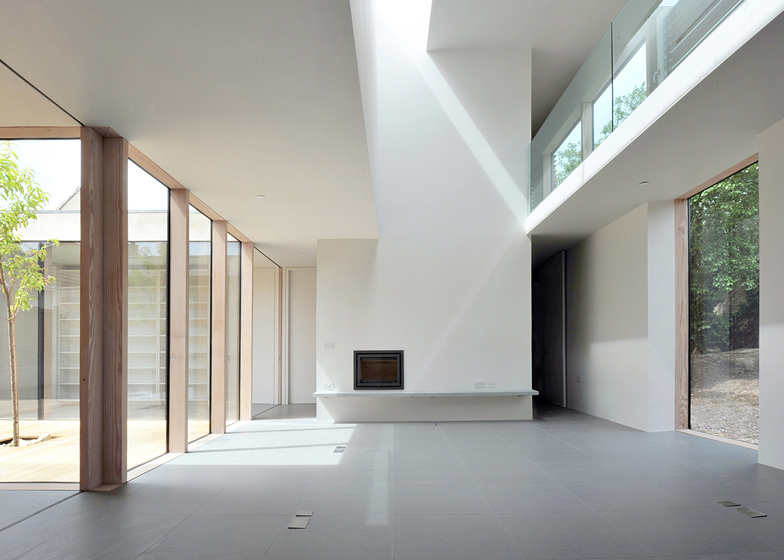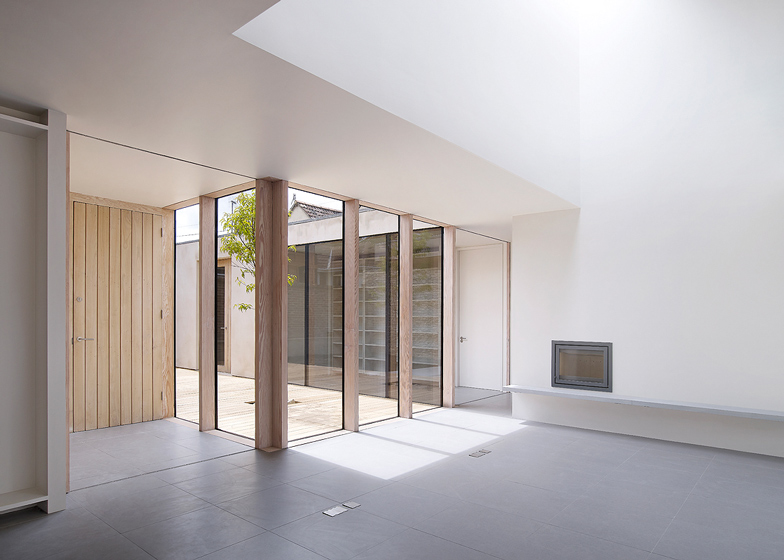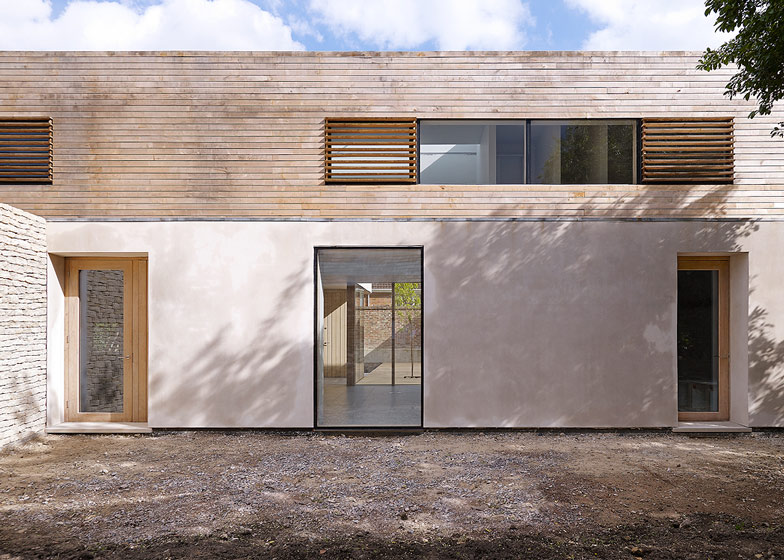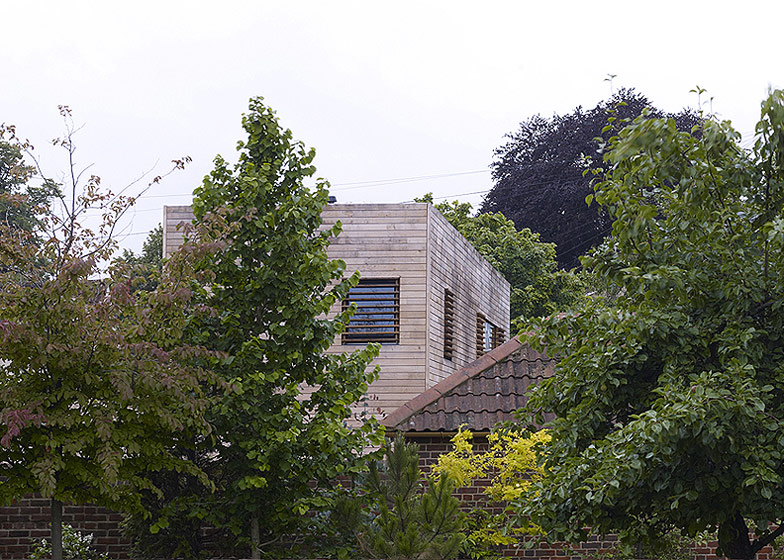This courtyard house in the south-west of England by architects Studio Octopi integrates flush thresholds and wide doorways as subtly as possible, so that no one would notice it was specifically designed for a resident in a wheelchair (+ slideshow).
Named Orchard House, the building sits on the former site of a walled garden and orchard in Wiltshire and Studio Octopi was asked by the planning authorities to integrate the historic stone wall into the proposals, even though it had almost entirely eroded. "We had to reinstate the wall and this helped to form a series of compound courtyard spaces," architect Chris Romer-Lee told Dezeen.
The architects designed a two-storey house with both a staircase and a discreet lift, to enable easy access for a wheelchair without appearing unattractive. "The client was adamant that this house wouldn't be dominated by her disabilities," said Romer-Lee. "A family could easily live there without changing anything."
The first floor runs along one side of the building, but is recessed around a double-height living room on the ground floor.
A wall of glazing separates this living room from the south-facing courtyard outside. "We began to look at the house as a protective environment, a kind of hideaway within a series of courtyard spaces," explained Romer-Lee.
The main bedroom and work study are located on the ground floor, while a guest room and hobby studio occupy the top floor.
For the exterior walls, the architects used a mixture of lime render and timber slats, intended to reference the agricultural buildings typical of the surrounding area.
Other projects we've featured by Studio Octopi include a terraced house transformed into a combined gallery and living space.
See all our stories about Studio Octopi »
Photography is by Julien Lanoo.
Here's a project description from Studio Octopi:
Orchard House was commissioned by our client as a place in which to live, work and pursue various hobbies. The client specifically wanted to create a lasting piece of responsive architecture that was not defined by her use of a wheelchair and where the building interacted effortlessly with the landscape. The house has been designed to Level 4 of the Code for Sustainable Homes.
Above: site plan - click above for larger image
Located on the site of a former walled kitchen garden and orchard, landlocked and accessed only by a track from the main road, the house and gardens form a sequence of enclosures that unfold revealing a private interior world reminiscent of the secret garden. The design and materials reference the style of traditional agricultural buildings preserving the original character of the site: the lower storey is rendered and the upper clad in loosely spaced timber slats. An historical ‘boundary’ wall was reinstated, intersecting the house, formed from local limestone.
Above: ground floor plan - click above for larger image
A simple free flowing plan wraps around a glazed central courtyard filling the house with natural light. The shallow plan, careful alignment of windows and a double height gallery allow views to cut across the building to the various gardens enabling multiple readings of the space. Two large sliding doors can be drawn to close down the open plan, shutting off the entrance hall, or library and master bedroom. The upper storey provides an office and second bedroom with screened windows that look out over the historic houses of Calne.
Above: first floor plan - click above for larger image
A studio was included to the north of the house looking over the orchard garden allowing the client to practise various arts and crafts both inside and out. In the garden, three old fruit trees are planted in an arrangement that suggests a fourth once stood between them. We replaced the missing tree, forming the focal point of the central courtyard.
Above: section - click above for larger image

